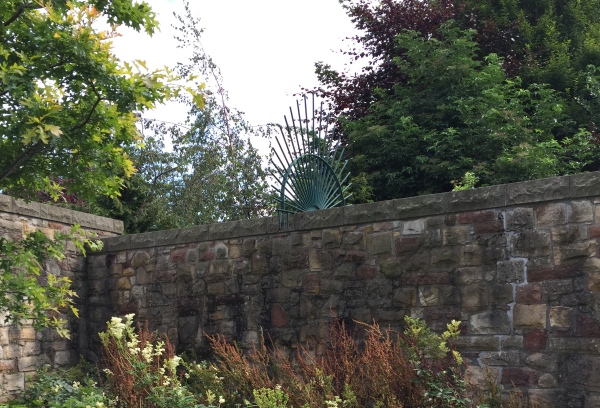follow spikes > Quadrant Spikes
.
Generally speaking, fences don’t overly excite me. They belong to a category of things I don’t pay particular attention to, and when I do, it usually involves trying to jump across or doing my best to see what lies on the other side. That said, fences are very good at doing their job – they demarcate, define boundaries, keep intruders outside. They are also a tool of ‘making specific’, excluding a piece of land from the rest of the landscape, and sometimes, for better or for worse, loudly proclaiming “Mine!”. While this could lead into a lengthy discussion about the role architecture and landscape play when politics touches upon the question of free movement, this isn't the place for it. I believe landscape architecture is a boundary-drawing practice, allowing certain processes to unfold and certain practices to take place, and some form of exclusion is inherent to what we do. The point is not to remove such differentiating altogether but to think of how and when those boundaries can be shifted, transformed, challenged, turned into something productive.
.
And this is the point where things start to get interesting. The type of a fence I get very excited about does not just delimit or keep out. It dares. When I come across a fan fence I cannot help but think why was this necessary in this particular location, what sort of movement did it try to prevent (how difficult would it be?), why was this seen as the most effective and preferred security measure, why some quadrant spikes altogether?
.
It turns out that fan fences are extremely site-specific. Commonly they are custom-made, with no one-size-fits-all. After I inquired about any sort of information fencing experts might have on this particular type of a fence, a fencing company sales representative briefly responded: “Sorry but I cannot provide you with a typical detail.” Perhaps their obscure character is what makes them so rarely sought after and yet so varied. They can be austere or ornamental, on a balcony or in a ditch, a status symbol, an essential piece of deterrence, or mere decoration. They are a form of protective security measure that cares about how it looks – I like to think this is not (or not just) the product of neutralizing security controls but of a very deliberate decision of ‘drawing attention’.
.
In a country where the discussion about the freedom of movement goes back at least some eight hundred years (just think of enclosures acts) and where one has become almost accustomed to walk around, not walk across, instances that remind you of the very possibility of walking across are rare. Contrary to the typical layout of a fence safeguarding a precious interior, fan fence is not inward or object-focused. It draws attention to the movement. Whether to cross or not is then, of course, a different question.
.
(London, December 2019)

